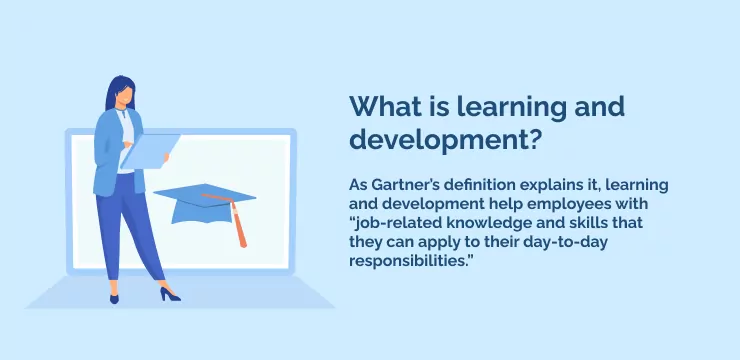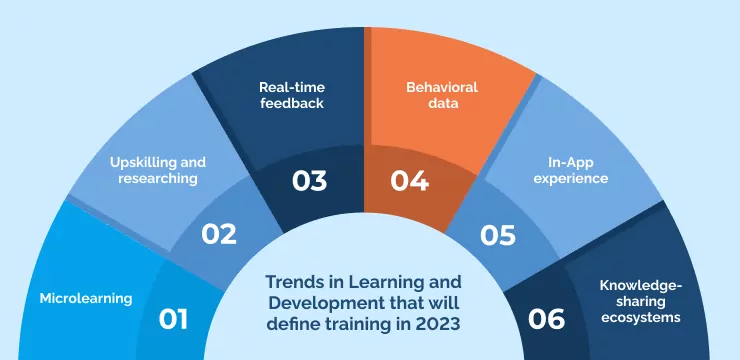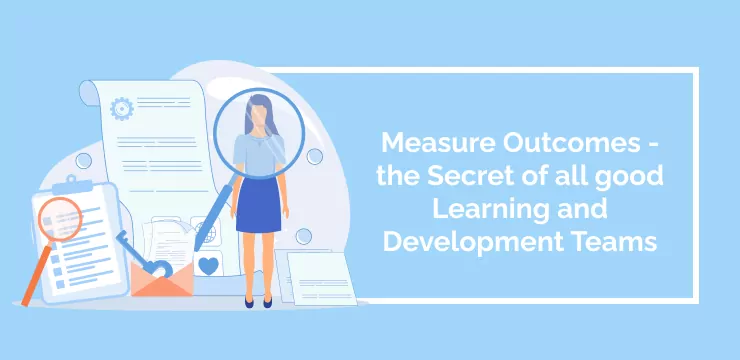
Learning and development are central parts of organizational stability. Since the discipline started a century ago, it has adapted to fulfill the changing needs of businesses.
Today, learning and development are even more vital. Around the world, companies report problems with a “skills gap,” – as a 2021 McKinsey report explains. Put simply. Organizations face a problem: their employees lack key skills for business success.
Maybe it’s not much of a surprise. Technology, society, and work itself are all changing. There’s no crystal ball to tell us what tomorrow’s needs are. Traditional forms of academic education give many great skills. But it’s much harder to keep up with business demands in fields like digital marketing, data analytics, and e-commerce (to name just three). So – training “in-house” programs are vital to keeping your workforce meeting the skills.
This article is for anyone who wants to deliver the best training possible. Perhaps you’re experiencing a skills gap in your company, your existing staff isn’t rising to the challenges, or you’re just facing a hiring freeze. Whatever happens, you’ll need to know the top trends in training methods.
We’ll start by reminding ourselves about the meaning of learning development today. Then, we will dive into six key learning and development trends to help you stay on top of the digital learning curve. Before we finish, we’ll remind you about evaluation: an important aspect of training often forgotten.
Good training is the key to a resilient, adaptable, and stable organization. Equip your staff with new skills, and the future is yours.
What is learning and development?

As Gartner’s definition explains it, learning and development help employees with “job-related knowledge and skills that they can apply to their day-to-day responsibilities.”
In some ways, this is very simple: training helps people do their job better. It’s like learning a new language, reading Shakespeare, or understanding the Riemann hypothesis.
But in other ways, training is a tricky business. Good training is strategic, aligned with business needs, and useful for every employee. Training and development experts must understand many fields – education, business, psychology, and technology. Good learning programs don’t just come out of thin air: they must be carefully planned and executed.
The latest trends are just the tip of the iceberg. They might inspire you to take action but check them in with your company’s training professionals first.
Trends in Learning and Development that will define training in 2023

The core purpose of L&D stays the same over time, but its implementation changes dramatically from decade to decade. In the past century, changes in industrialization, bureaucratization, and digital transformation have made the workplace radically different.
So it’s no surprise that teaching methods have also changed over time. In the advanced post-industrial age, we’ve had many things: seminars, videos, and workbooks. But you’ll need to do better than that to keep your staff engaged.
So in this section, we’ll take a look at the following exciting developments:
- Microlearning
- Upskilling and researching
- Real-time feedback
- Behavioral data
- In-App experience
- Knowledge-sharing ecosystems
Microlearning
Training through microlearning is a popular method today.
With microlearning, staff learns through very short sessions. Often, microlearning might doesn’t even seem like learning. Quizzes, games, videos, and developmental briefings are all examples of microlearning.
These interventions are not demanding. A microlearning session is no more than five minutes. After a microlearning experience, staff can quickly get back to work. Many companies are happy to find a method integrated into the working day. In 2022, Deloitte reported that its internal training followed this pattern.
Microlearning may introduce staff to new ideas. Alternatively, it may help to revisit knowledge: it halts the “forgetting curve” and enables staff to retain key information.
Upskilling and reskilling
As we said earlier, no one has a crystal ball to know the skills that we’ll know in the future. Upskilling and reselling are great ways to deal with new challenges. Instead of chasing new hires for every unique need, organizations can build on their loyal employee base to stay up to date.
Upskilling and reselling make sense at every level of an organization. A front-line factory worker might be called upon to learn digital skills; a marketer might learn AI tools to improve their productivity, or a CEO might learn what it means to be anti-racist.
This method has broad organizational benefits. In the wake of the first wave of Covid lockdowns, a 2020 Ernst and Young analysis argued that upskilling helped build resilience, adaptability, and internal agility for many companies. A focus on microlearning could give you more than you expected.
Real-Time Employee Feedback
Great educational impact relies on great feedback – in whatever setting.
Employees already expect feedback during performance management procedures. They learn about what’s going well, where they can improve, and how to reach out for support.
But how about if they received constant feedback on their work? With the right monitoring and care, real-time feedback means that staff back be quickly directed to remedial coaching, information, or guidance to resolve their problems promptly.
In-App Experiences
Regarding digital implementation projects, DAPs aren’t just useful for providing feedback. They can give staff everything they need to understand how to use new technology.
With in-app experiences and contextual help systems, staff doesn’t have to go outside of their workflow to get the help they need. In-app experiences give convenient access to highly-personalized information. Like micro-learning, the guidance is very small and easily digestible.
In-app experiences won’t answer all training needs. But in specialist areas, they are an excellent option.
Behavioral Data and Personalized Experiences
As good training is based on clear needs assessments, behavioral data can give some unique insights for employee training and development.
Assessing behavioral traits is highly subjective. But there are many ways of doing this. You’ll start by gathering information from interviews, surveys, DAP information, and performance reviews.
You can use that information to understand your team’s core strengths clearly. It means you can know where you can build and where you need to improve.
Knowledge-Sharing Ecosystem
Knowledge-sharing is another innovative approach to organizational learning and development.
Leaders in many companies don’t see all their employees’ knowledge and experience. At every level of the company, staff will have an unbeatable understanding of the best work processes.
So, gather information from the company and distribute it through a Learning Management System. Moving forwards, you will never lose sight of knowledge and experience from the front-line experts.
Measure Outcomes – the Secret of all good Learning and Development Teams

In this article, we’ve given you a taster of some of the latest trends.
But let’s not get carried away. Just throwing out a handful of training tasks will not help reduce your skill gaps, enable employees to do better, or help you meet your business goals. The whole process must be designed strategically: and one of the core parts of this is evaluating learners’ improvements.
In the words of training expert Rebecca Page-Tickell, “It is very easy to be busy providing a range of interventions,” but this is not the whole purpose of learning and development professionals. Instead, “The focus of your activity should be the far more nebulous and less easily defined actual increase in skills, knowledge or enhanced attitudes and improved levels of behavior.”
If the latest intervention trends aren’t fit for purpose, don’t use them. In some cases, traditional methods are just as good, but for technology, you must think clearly about getting the best.
Training Programs for Stability and Growth

Most businesses understand that learning and development are important. Far fewer organizations know how to make the most out of learning activities. A few years ago, Gartner research found that less than half of staff use their training effectively. If this sounds like your company, you’re throwing money down the drain.
Good training improves the employee experience, improves company resilience, and ensures that customer outcomes are as good as possible. Build your training plans strategically – and prepare for a bright tomorrow.
WalkMe Team
WalkMe spearheaded the Digital Adoption Platform (DAP) for associations to use the maximum capacity of their advanced resources. Utilizing man-made consciousness, AI, and context-oriented direction, WalkMe adds a powerful UI layer to raise the computerized proficiency, everything being equal.



